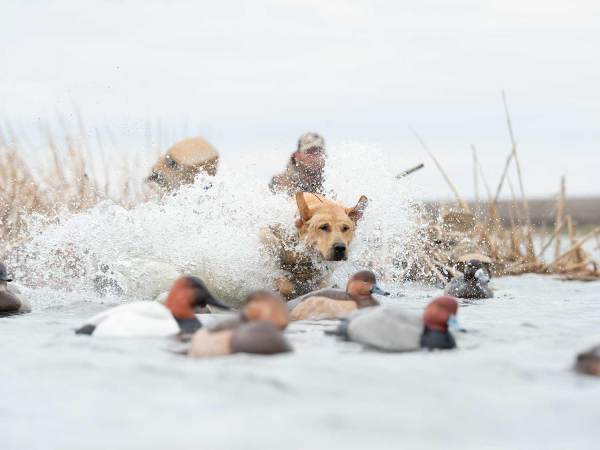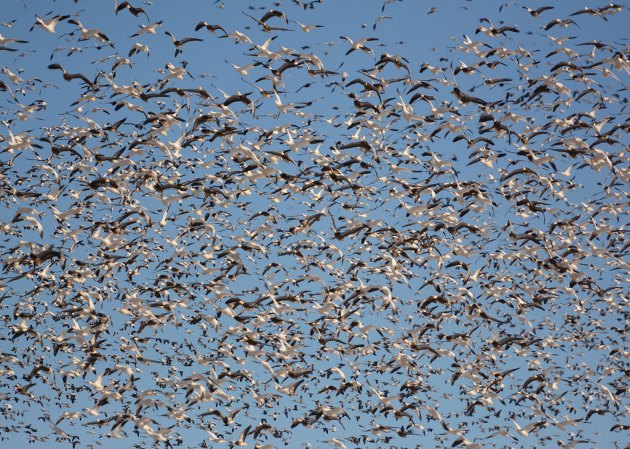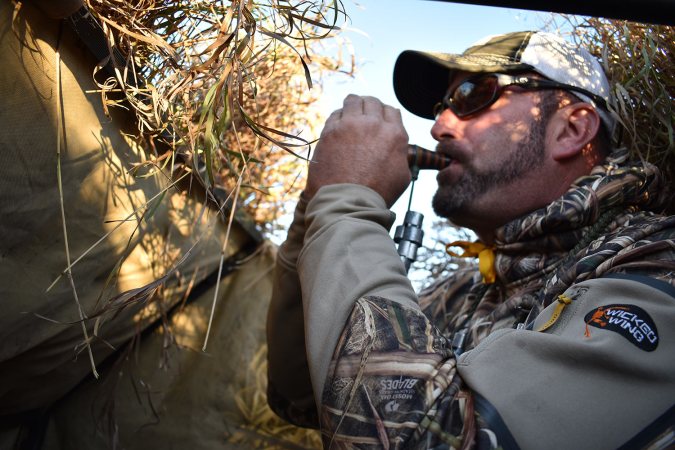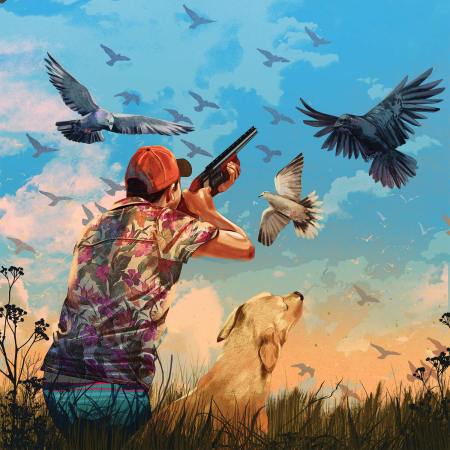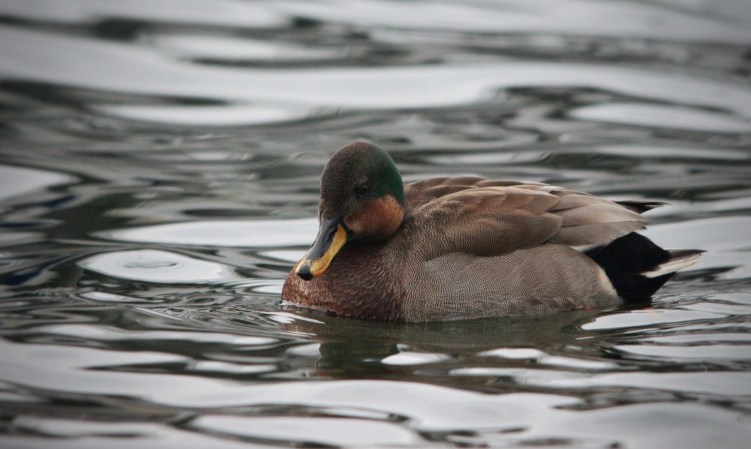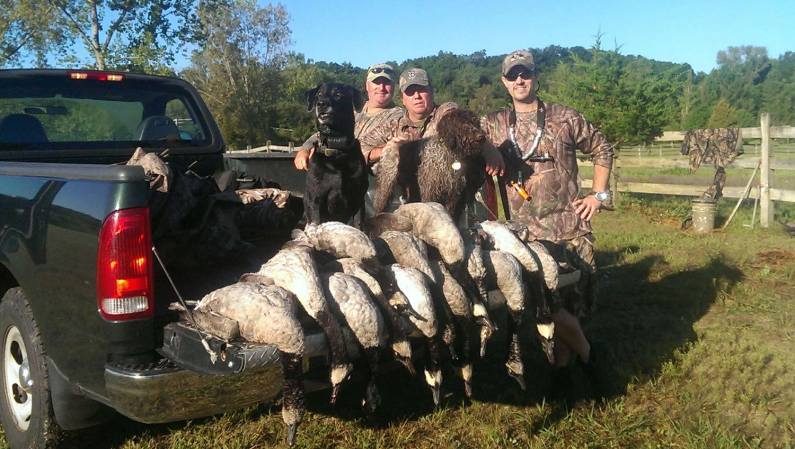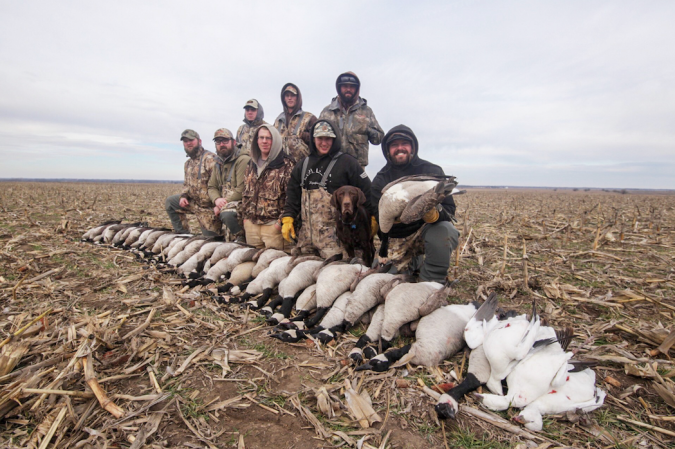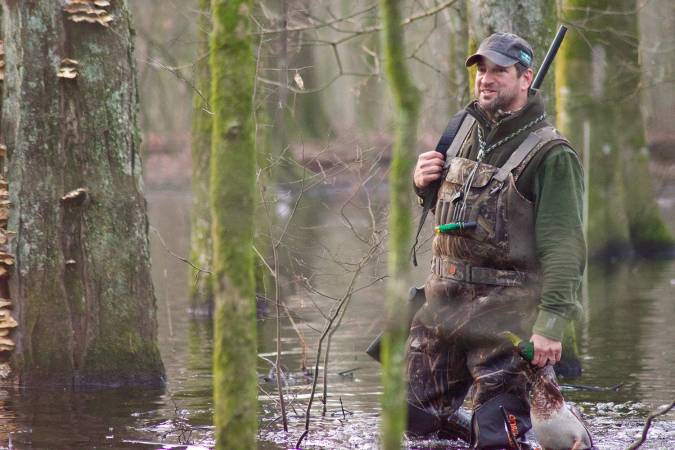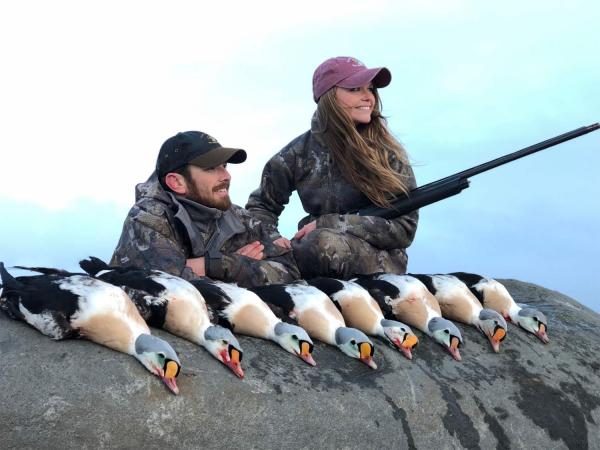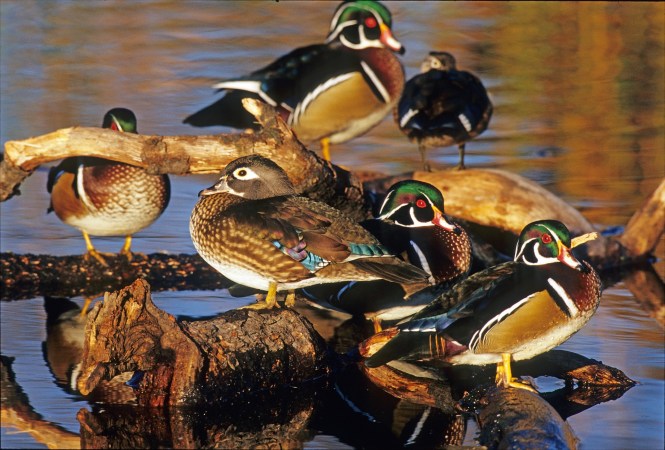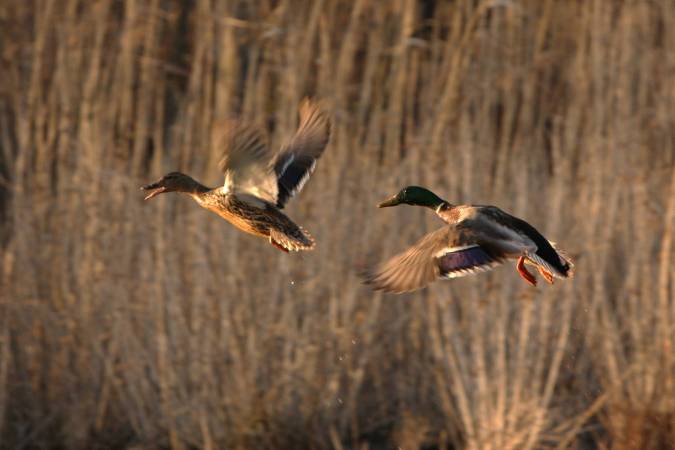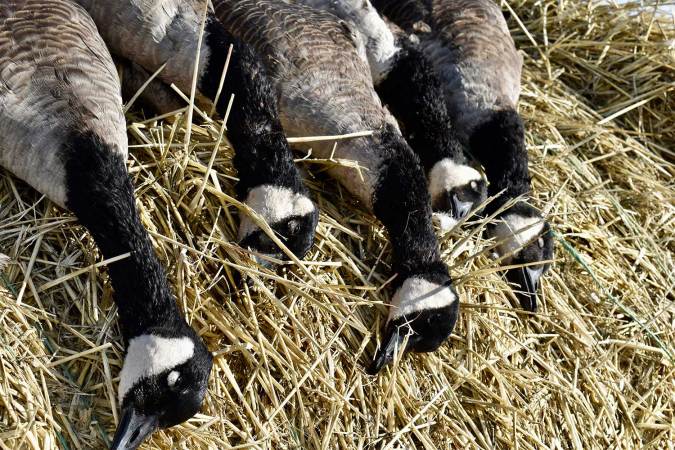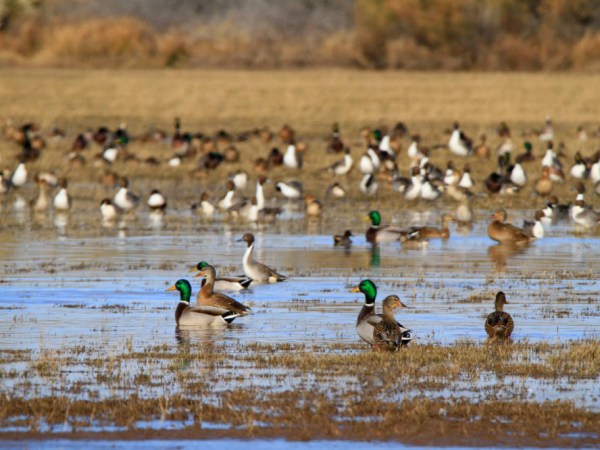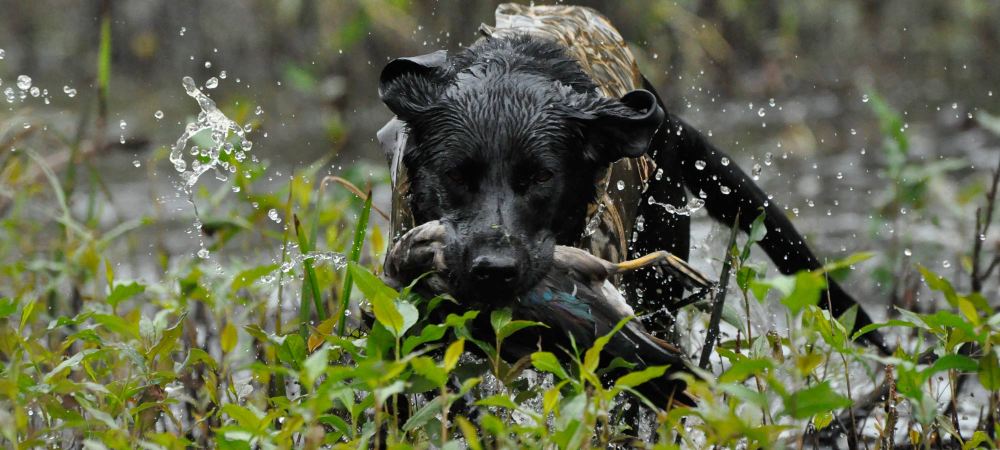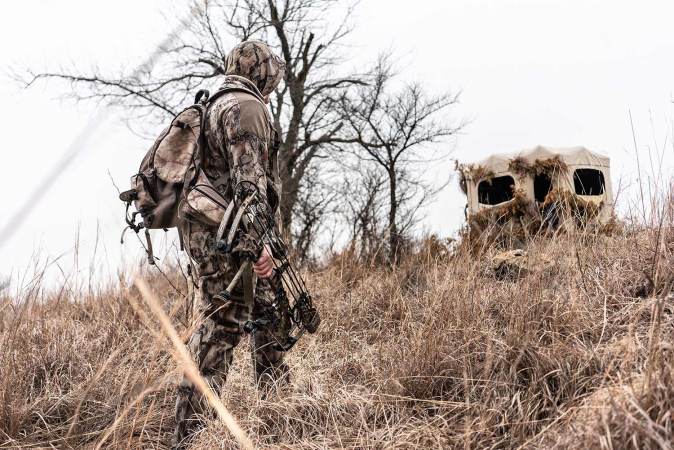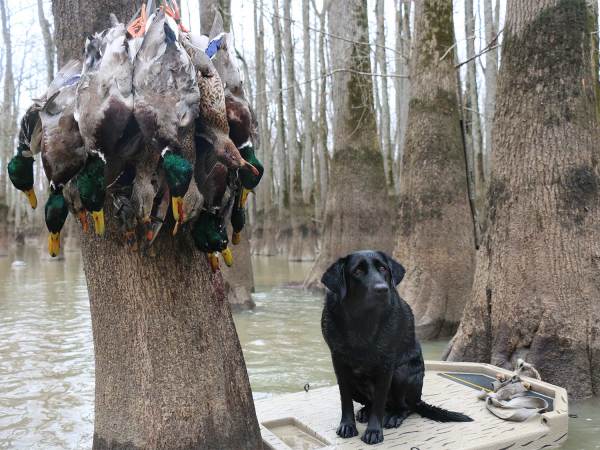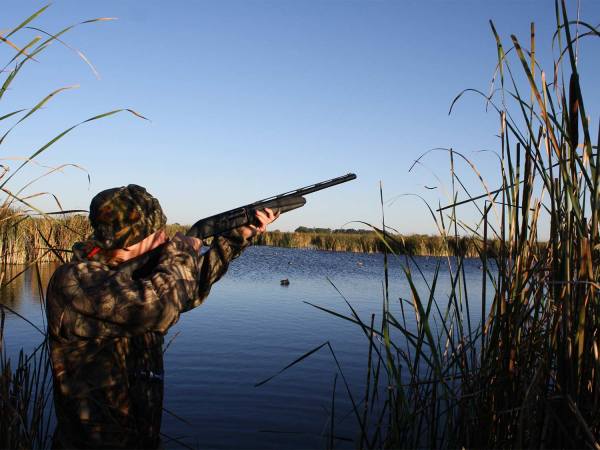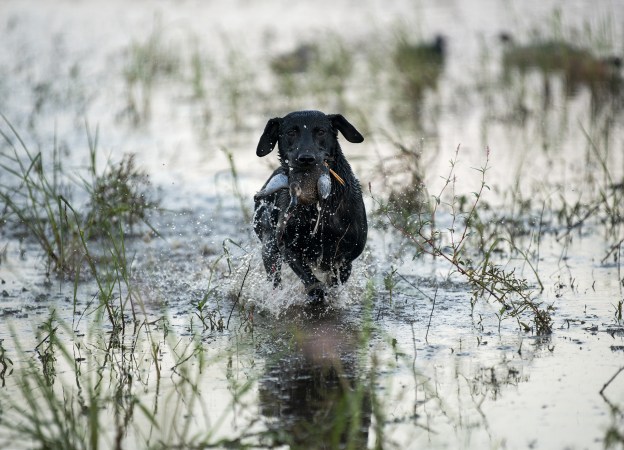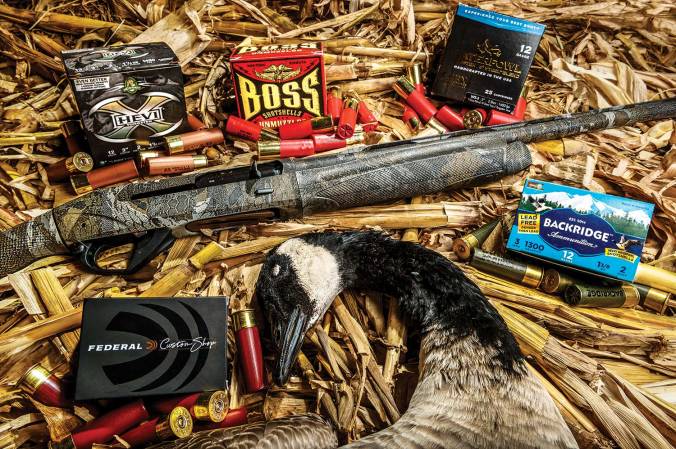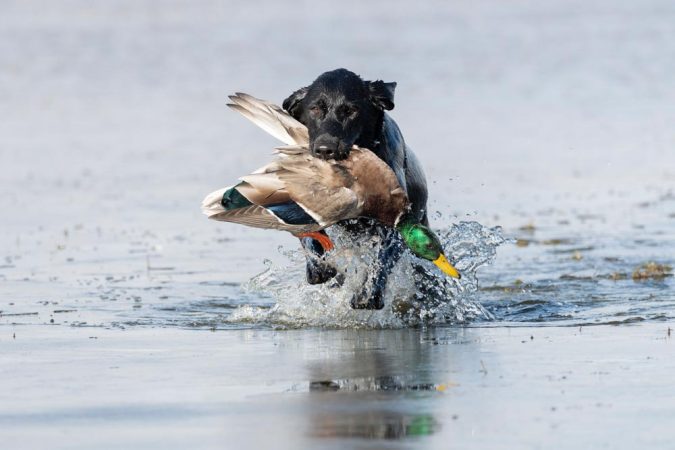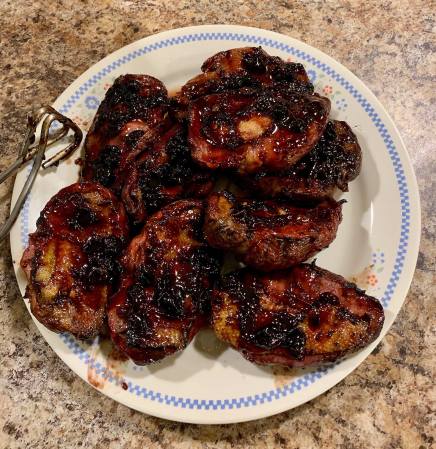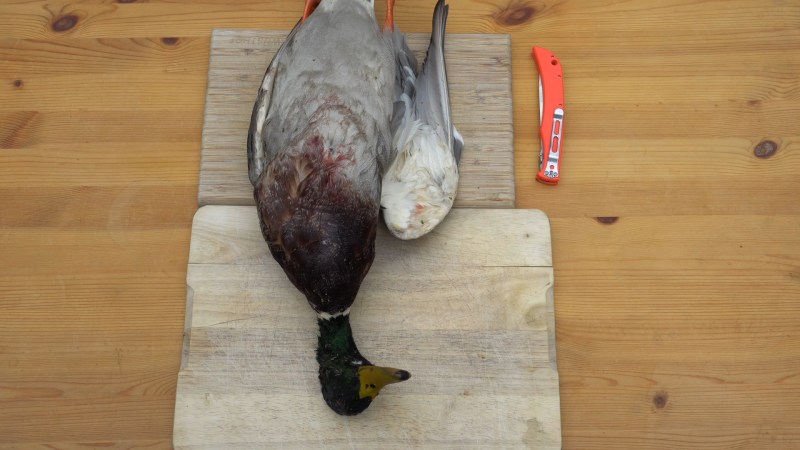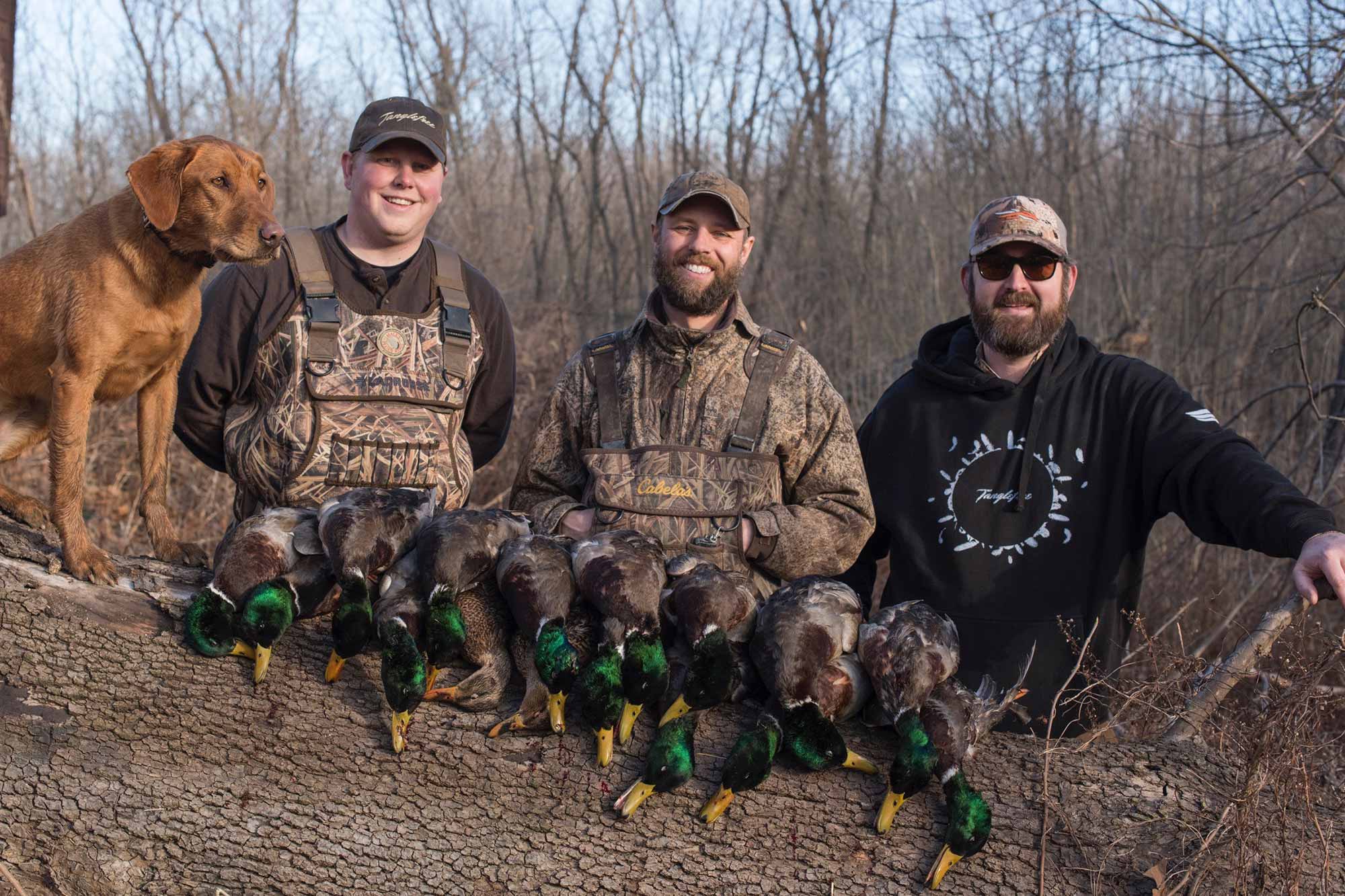
A north wind, skeins of greenheads riding it south, breaking from on high at the cut of your call, and falling into the decoys. Buddies jump up with shotguns pointed at fluttering mallards…those are mornings every duck hunter lives for—Migration Day.
Now reverse that. Mallards headed north on a south wind, racing back to the breeding grounds (so they think), but first they have to make stops along the way to feed, water, and rest. They are incredibly susceptible to being killed during this small window. Hungry and anxious to get home, tough late-season mallards turn into fresh birds.
When to Expect the Reverse Migration
How can you get on a hunt like this? Reverse migrations of mallards and geese can occur just about anywhere you get a hard freeze followed by a quick warm up. If you live in a state where that kind of weather occurs regularly during the season, then you are likely going to see greenheads and geese funnel back from the south. I’ve seen it happen from October in South Dakota to January in Kansas. Hell, one of the best Canada goose flights I’ve ever witnessed took place during a sunny morning on Long Island, New York, two days after the temperature dipped below freezing and a foot of snow fell.
How to Prepare Your Hunt
The biggest factor in taking advantage of reverse migration days is being ready. Birds are going to be looking for the first open water they see with a pile of ducks sitting on it. Federal and state refuges and cooling ponds (discharge lakes used by power companies) are some places that will be holding birds, but you likely can’t hunt, so make sure your set up is south of those areas or the birds will short stop you.
“Our biggest reverse migration almost always happens in January,” says Kansas hunter Brad Harris. “It will get bitter cold and freeze everything up, so most of our birds will go south. Then it thaws and they come back on a south wind and sunshine.”
Mallards, lesser Canada geese, snow geese, and specklebellies (we’ll get to the geese later) are the four most common waterfowl species that reverse migrate while fall and winter seasons are still open. Big honkers will too, just not with as much regularity because in most cases it takes more than a quick weather front to get them to move south en masse. And white geese are huntable during the spring conservation season as they chase the snow line back to the tundra, of course. Other species do reverse migrate before the spring rush back north, it’s just these five seem to do it with more regularity, making them increasingly vulnerable.
“Just this last week (in early December), we saw thousands of specks and snows coming out of the south, flying over Champaign,” said Illinois biologist and photographer, Ryan Askren, who still had more than six weeks of season left. “All waterfowl have an innate drive to want to be as close to the breeding grounds as possible. Specks, in particular, are an early-migrating bird.”
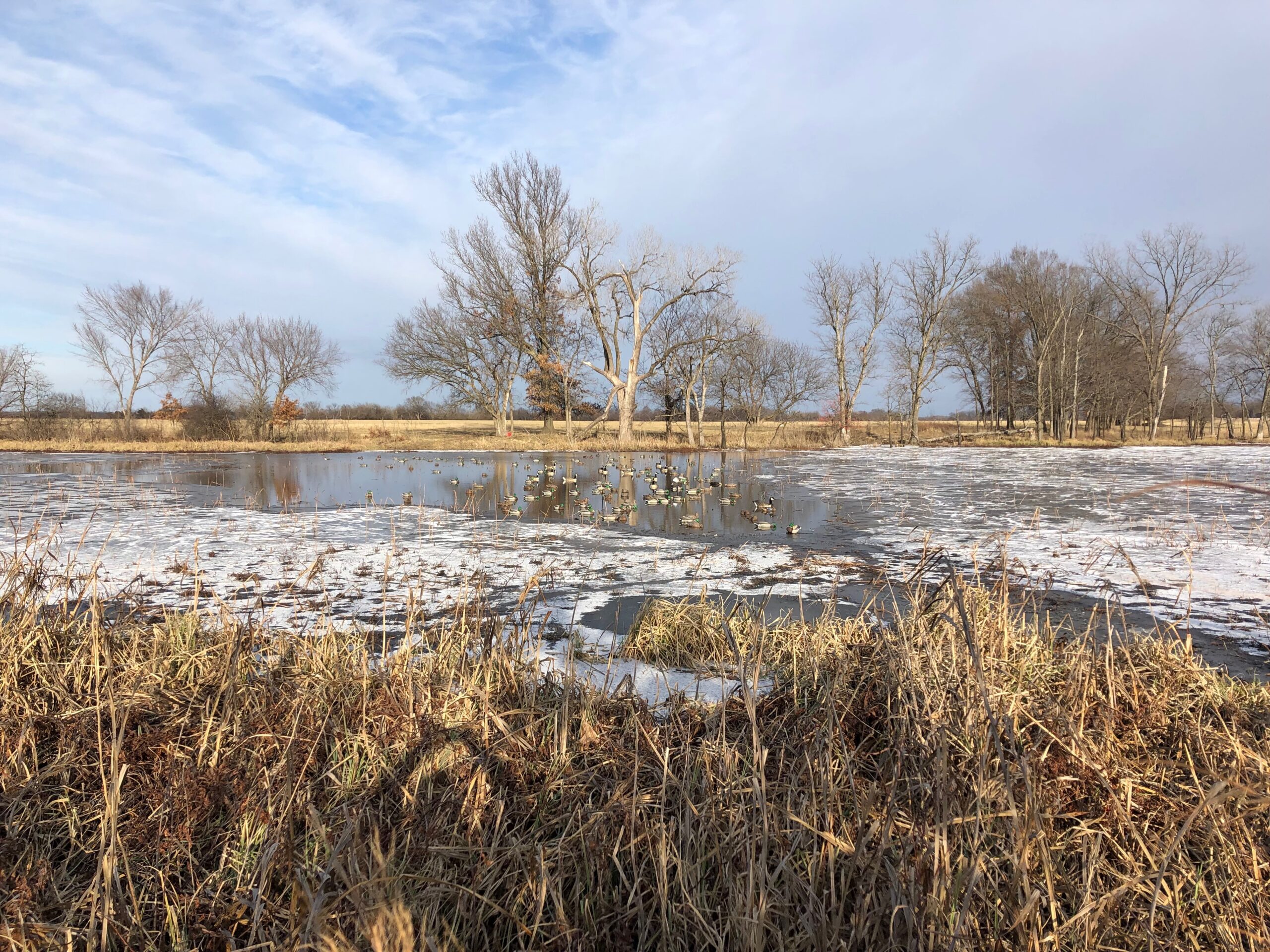
Set Big Decoy Spreads for Greenheads
Sometime in early- to mid-January, it will get cold enough to freeze a majority of the open water in central and southeast Kansas. There’s some deeper sand pits and rivers that won’t completely lock up, but it forces a majority of the greenheads to move south. It only lasts a few days and when the mallards return, Harris is waiting with open water, dozens of decoys and aggressive calling.
“Two days before the thaw, I’ll get my ice eaters in and we will open up water, so that when birds are coming back from the south, it’s the first thing they see,” he said.
You can hunt in flooded ag or in dry fields, but Harris’ best results have come on oxbows and smaller ponds—there’s more open water thus better visibility for birds returning. He has had some stellar hunts in flooded corn during these times, but on average bigger water is better because it allows for a larger decoy footprint. And when it comes to decoys, you will need to go big. Set goose sleeper shells and mallard and goose full-body field decoys on the ice with mallard floaters on the water.
The key is making the rig look like the refuge, where every duck coming from the south wants to be. And have plenty of good callers wailing away at sky-high migrators. You need to get their attention first, but also, an acre full of fake ducks needs to sound like an acre full of live ones.
“We run about 10- to 20-dozen floaters on the water and anywhere from two to four (spinning-wing decoys) as long as the sun is out, which it usually is on a warm up,” Harris said. “You have about a two- to four-day window to really get after them before it’s over.”
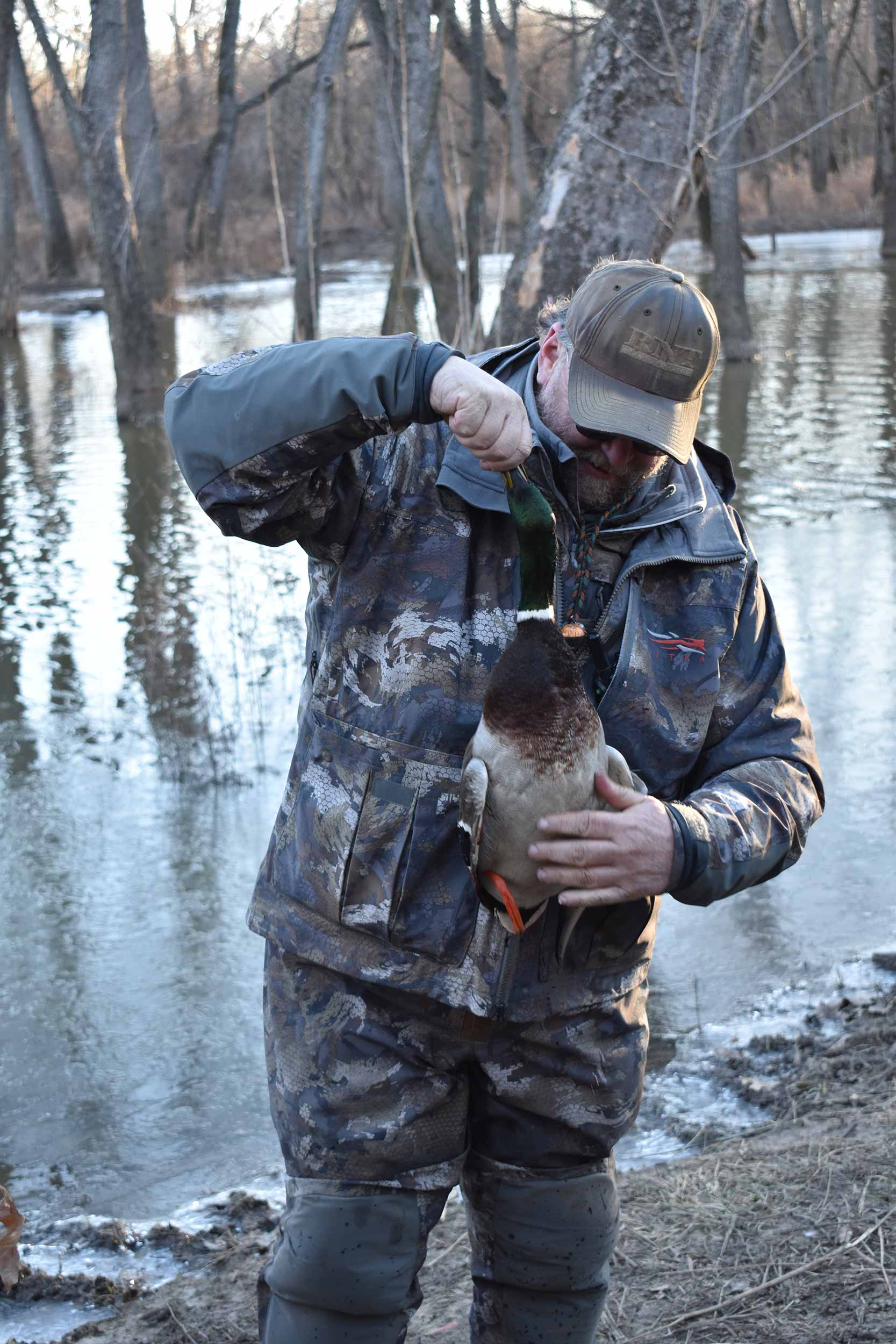
Where to Hunt the Reverse Migration
This phenomenon is not specific to Kansas. It’s also common in Oklahoma too, but fair warning, that state is overrun with hunters and wannabee guides posing as legit outfitters. That’s not to say you can’t find a good guide in January, just be cautious. I wouldn’t advise freelancing down there either. There is some public land, but most of the good duck holes are private and door-knocking is only going to leave you sorely disappointed.
Fact is, the reverse migration will happen just about anywhere there are drastic swings in weather patterns. Here in central Illinois, we see it happening more frequently, mostly in November and early December. You can just about bank on mallards, specks and/or snows showing up after a short cold snap followed by a warm up. It’s a tough place to hunt because we don’t get the bird numbers we once did, so on the first and second days of the warm up, it’s game on.
It’s hard to get access to private lakes and ponds, and the public ground is very restricted here in terms of when you can go, so leases and handshakes with a landowner are paramount. A lot of the water is deep; old rock quarries that filled over the years. Since it can be tough to throw out a huge spread with decoy lines that might have to be as long as 100 feet, we sometimes set goose and duck decoy rigs—with remote spinning-wing decoys (so they can be turned off when geese are around)—on a high point in a field close to the quarries. So, if you can’t hunt water, get as close to it as possible. Your hope is the birds see the decoys and come in for a look.
If you live in a state where the weather swings aren’t as wild, reverse migrations are likely not going to happen as often, or at all. For example, if you live in Minnesota or the Dakotas, or Canada, and winter has set in for good, mallards aren’t likely to funnel back if there is a freak snow melt. They are probably too far south already.
But in states that have more fluctuation in weather patterns, the reverse migration can happen, and it doesn’t take much change in tactics from when birds are coming off the refuge as they would on a typical morning.
“I’d say recently our biggest cold fronts have been in November and then December turns pretty mild,” said Tony Vandemore, who co-owns Habitat Flats in north-central Missouri, and has seen an uptick in reverse migration days in recent years. “Location wise, we get south of the refuge, and we’re not going to leave a decoy at home. The birds are up there in the stratosphere and they just drop out of the ozone.”
RELATED: Five Late-Season Waterfowl Hunting Tips
Target Lessers, Snows, and Specks
The Central Flyway is where you will find these three species most commonly bouncing north to south and back again, from north Texas into Oklahoma and Kansas (I highly suggest taking a week to 10 days and completing a three-state goose swing in late January and into February). Just like the mallards, they will go on lockdown, sitting on ice, or bugging out for warmer weather during a deep freeze.
When it warms back up, the birds go insane that first afternoon, flying in every direction imaginable. There is no way to tell what field they will hit, and it’s also tough to scout them for the next day because they will act completely different in the morning following a calm night on the roost. Your best bet is to just get under them in a traffic field with a high point so they can see the spread.
“They can be unpredictable,” said Drew Palmer of Mile North Outdoors, who has guided and filmed extensively throughout North America. “But then they will go back into a pattern, and that’s when you can have a damn good day.”
Massive spreads of full-bodies, silhouettes and socks (we are talking a spring snow-goose size rig) with multiple callers—the more the better—laying in the decoys are key. If it’s sunny and the wind is blowing 15 miles per hour, it can be downright filthy with massive wads of lessers and specks (sometimes with white geese mixed in) literally landing at your feet.
And when February hits, forget spring snows unless you have a slam-dunk juvie shoot lined up in Arkansas, because that’s when you REALLY want to be targeting dark geese. They are in a hurry to get back north, feeding hard and flying hard, and it makes them way more susceptible to being shot.
“Some guys only want to come here to kill five greenheads, but if I can get them on one of these goose shoots, they’re hooked,” Palmer said.
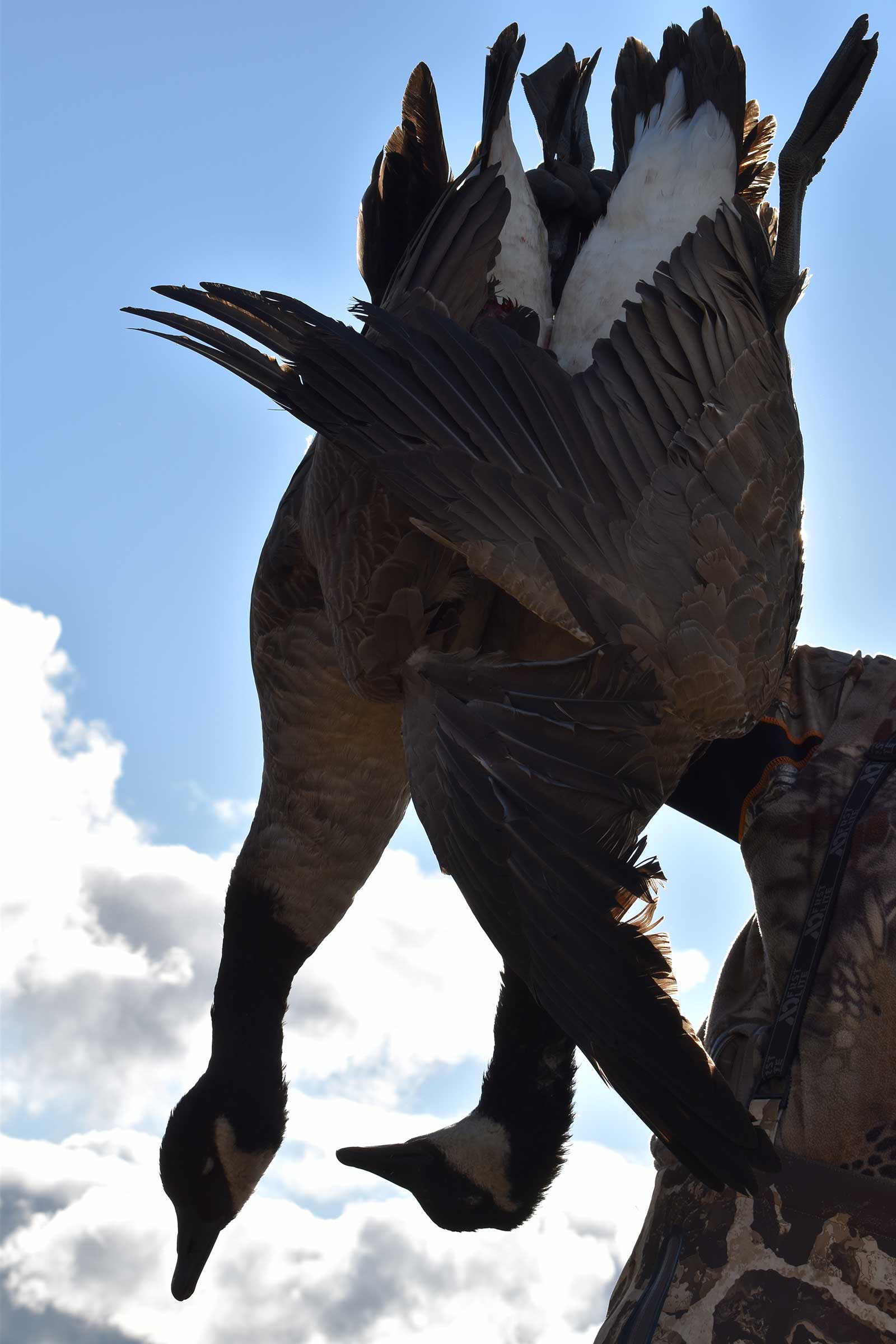
Chase Big Honkers If You Dare
Even big late-season Canada geese, which are notoriously difficult to hunt throughout the Midwest and East, can fall victim to calls and decoys, particularly over water and half-frozen ponds in early February. One of the most ideal setups is to fill the icy edge with honker sleeper shells and set floaters on open water.
Winter wheat, sod farms or just plain grass (I know a hunter who has permission and targets reverse migrators in the outfield of a baseball diamond just past city limits) are also ideal spots to shoot big geese.
Calling is subjective. Big geese in different locales like to be called at differently. It’s also weather dependent. Calm days, typically mean ease off the call. Windy days, go ahead and get aggressive. Good callers have a better handle on how to control honkers and give them notes they want to hear to get and keep their attention. There’s no universal way to land big geese. You’re going to have to try—and fail—to see what works best. One tip Scott Threinen, a Minnesota honker killer and owner of Molt Gear, has always championed is to get loud when geese are cupped and on approach. He says a lot of hunters will go silent and reach for the guns, which is a mistake. Honkers on the ground or water will get very vocal when other birds are coming in. It’s basically to tell them to stay the hell away, that “this is my area and you are not welcome.”
But it’s definitely one of the times during the season Canadas are most reckless. Typically, they are an anti-social bird that shortstop decoys and generally frustrate field hunters (at least in the Mississippi and Atlantic flyways). But those habits go out the window this late in the year. That’s not to say they aren’t still difficult, but now will be the best time to hunt them.
“My favorite goose hunting is the reverse migration in late January and into February,” Vandemore said. “The birds do not have to move far, maybe 40 or 50 miles, and it resets them. It makes a bird that was stale a few days ago as dumb as when it first got here (earlier in the fall).”

